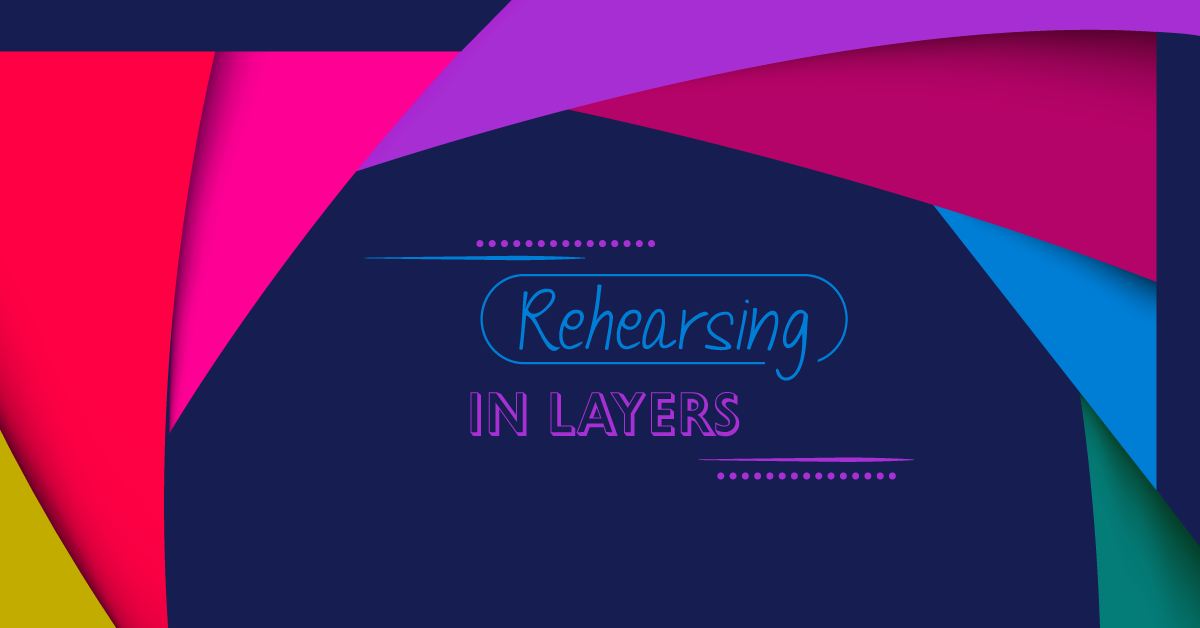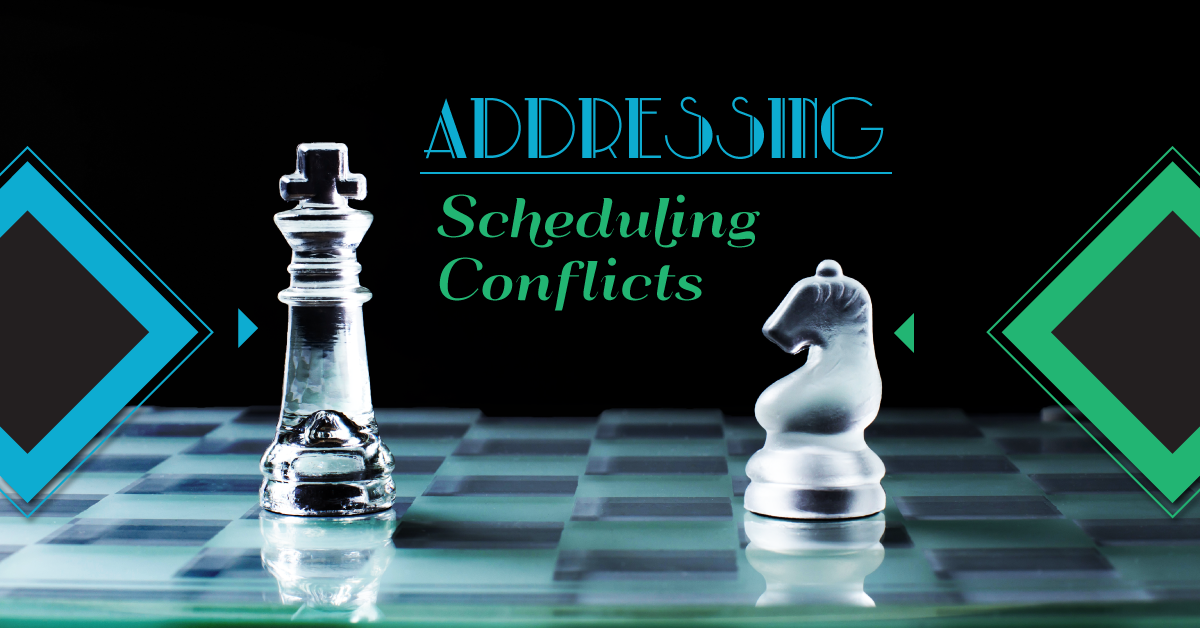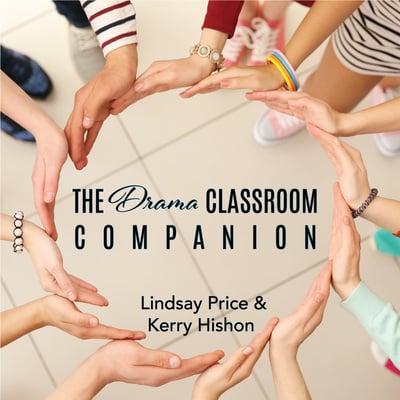Rehearsing in Layers
Creating a theatrical piece is a bit like baking a cake – choose your recipe (the show), add ingredients (cast and crew), stir together and bake (practice and rehearse). At the end, you’ve got a fabulous cake… I mean, production!
Following this analogy, it would seem that, just as adding decorations to the cake (icing, sprinkles, cream, cherries, and so on) comes at the end of the baking process, it would seem that adding theatrical “decorations” (costumes, props, lights, sound effects, set pieces, furniture, and so on) would come at the end of the rehearsal process. And, for many time-crunched teachers and directors, that often happens. But, while that works for baking, adding the theatrical “decorations” during the final few rehearsals – or, worse, at tech and dress rehearsals – creates a very stressful atmosphere when working with student actors.
Add too many new elements at once, and all the initial progress on entrances/exits, lines, character work, movement and choreography seems to just vanish, leaving the actors stressed out and the director frustrated. It’s hard enough for students to remember their lines when they aren’t worrying about what prop they’re supposed to be using, what costume they’re supposed to be wearing, or what scene comes next in the show.
So, going back to the baking analogy, I suggest that, instead of “decorating” at the end of the process, directors and teachers “mix their decorations” right into the rehearsal process in layers. Rather than adding the extra elements right from book-in-hand rehearsals or leaving them all to the end, use a calendar to figure out what layers to add when.
Here’s how you do it!
First layer: Figure out when off-book day will be.
Off-book means that the actors must have their lines fully memorized and are no longer holding their scripts onstage. Depending on the show, I usually make off-book day halfway to two-thirds of the way through the rehearsal process. This gives students a specific date that they must adhere to, but also provides a little leeway in case someone slacks off in the lines-learning department.
Second layer: Determine when you will add furniture, props, and costumes.
Whenever possible, sooner is always better! My preference is to add furniture first (to assist with blocking and transitions early in the process), props second (to help with muscle memory for bringing items on and off the set), and costumes third. The exception to this is if a student is working with a specific prop or costume piece that is vital to their character or that they need to get used to (for example, character shoes). You should incorporate those items as soon as possible. Work with the various design teams to get started on acquiring/making these items as soon as possible, and get them into rehearsal. Use stand-in rehearsal props and furniture if the actual items are not available right away.
Third layer: Start planning your technical elements early.
If you know you’ll need sound effects or scene transition music, start planning that as soon as possible. Use them in rehearsals as much as you can. That way, when your actors get to tech rehearsal they won’t be totally distracted by strange sounds they’re hearing for the first time.
If you are directing a musical, you will of course be working with your music right away (whether that be with accompaniment tracks or a rehearsal pianist). If your show employs a band or an orchestra, you will need to add a sitzprobe to your rehearsal layers schedule so the actors, technicians, and musicians can hear what the others sound like.
Fourth layer: Make your schedule.
For one of my previous productions, we had a 14-week rehearsal schedule. We devised a schedule that added a new element on each of those 14 weeks, beginning with basic blocking and character work, then adding (in this order) furniture, off-book day, props, costumes, and technical elements (sound effects/music and lights). Below is a sample schedule as well as an exercise your students can use to try making a schedule of their own.
Adding show elements in layers allows your student actors time to adjust to each new aspect of the show. It can be overwhelming to actors and crew to have everything thrown at them at once. Help your students by making the process as easy and streamlined as possible!
Want more info?
Related Articles
The Drama Classroom Companion
by Lindsay Price & Kerry Hishon
The Drama Classroom Companion is filled with articles and exercises to build the skills needed for theatrical performance as well as real world skills like creative thinking, critical thinking, collaboration, and communication.
The Rehearsal Companion
by Kerry Hishon
You’ve chosen the play, paid the royalties, done the script analysis, held your auditions, and cast the show. Tomorrow is the first rehearsal. Are you ready? Really ready? The Rehearsal Companion can help!





